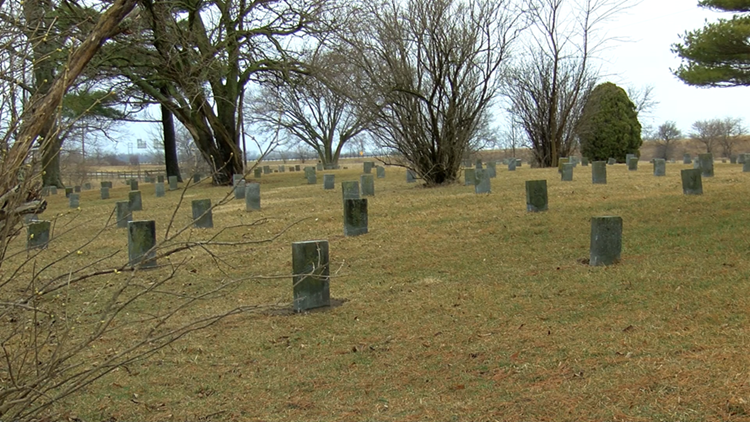WOOD COUNTY (WTOL) - The Wood County Museum has stories to tell, for within its walls, and rooms, thousands of lives were lived over the decades. Lives that had in some way, been altered by providence or poverty.
Holly Hartlerode is the curator of the museum and said those who came to the home in its over 100 years of existence, were in need of charity and compassion.
“Back then you were expected to work, but if you’re an elderly person, and couldn’t, or maybe a child whose parents have died or abandoned you or person with a mental health issue or a deformity in those days, there was no safety net, and you could come here,” she explained.
Hartlerode and the museum have put together a special exhibit examining the history of the infirmary and how it operated over the decades as a place where people could find refuge from a society that had no social programs in those years.
The exhibit reveals not just lives of those people who found comfort in Wood County’s home over the decades, but also looks at the similar houses of charity in Ohio’s other counties. Each room at the museum offers a look at various aspects of the daily lives of the residents, from dining and food preparation to laundry duties.
It was these operations that were the forerunners of modern social welfare, addressing as best they could, the variety of problems that affected the residents, from poverty to mental illness.
The exhibit not only takes a look at the lives of the residents, but also provides a glimpse into the commitment and dedication of the staff who managed the Wood County infirmary. This includes the life of long-time Superintendent, Frank Brandeberry and his wife Lotte, who managed the operation from 1904 to 1949.
In one room of the exhibit, visitors are reminded that many of the residents lived there as permanent residents and even died there. A funeral room, with an organ and altar, was provided for those who passed away while living there. And there were many.
Beyond the Museum, about 100 yards west of the stately brick building, lies a pauper’s cemetery where hundreds of the residents were laid to rest. Many of the graves lay unmarked for decades after their numbered headstones had been stolen. Just who and how many were buried there was a mystery.
Hartlerode and local genealogists have been working for many years to get the headstones back and identify the graves.
“At this point we have identified 252 confirmed burials," Hartlerode said.
She added that it’s been a long process, but they have made significant progress as they have explored county records, news articles and the home’s Superintendent ledgers. She said there are likely many more that haven’t yet been identified.
“Are there more than 252 buried here? Probably. But we have identified those we have records for, we’ll probably find even more more," she explained.
And Holly also said they know they have about ten people buried there who never lived at the home, including two unidentified murder victims whose bodies were never claimed by families, so they were buried at the poor farm cemetery.
To officially document and acknowledge those who are buried in the cemetery, next Saturday, April 6, the museum will dedicate a new marker with the names of those who have been identified and will acknowledge those who are unknown.
It is a way to “remember and honor them, because we have people from all over the world here that are separated from their families for eternity, so at least they know they are a part of our larger family now," said Hartlerode.



